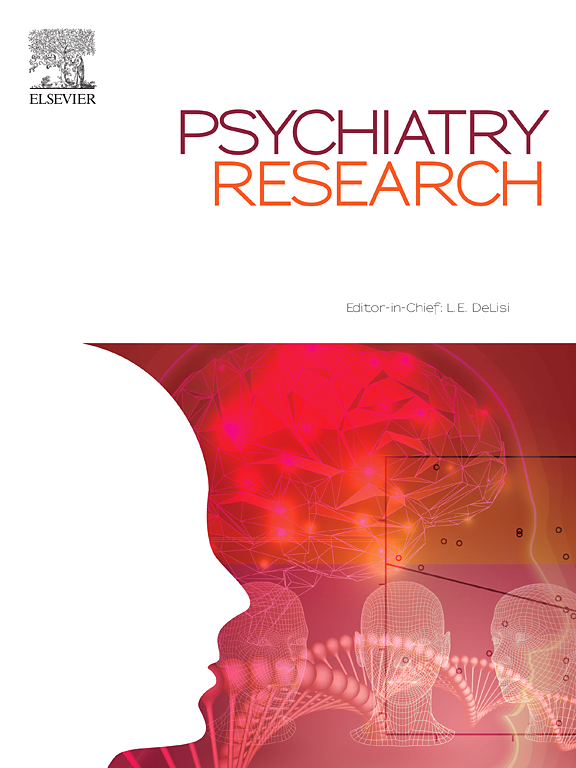星形胶质细胞在注意缺陷多动障碍中的作用:最新进展
IF 3.9
2区 医学
Q1 PSYCHIATRY
引用次数: 0
摘要
注意缺陷多动障碍(Attention-deficit hyperactivity disorder, ADHD)是最常见的神经发育障碍,以注意力不集中、多动和冲动为特征,在患者中表现出明显的症状和不同程度的严重程度。虽然ADHD神经生物学背后的细胞过程仍在探索中,但体外研究表明,某些细胞途径参与了其临床表现。神经发育障碍,如多动症,是由整个发育过程中中枢神经系统(CNS)中许多细胞的功能障碍引起的;然而,大多数研究都集中在神经元功能障碍上。在过去的十年中,神经胶质细胞和星形胶质细胞在神经发育过程中起着至关重要的作用,如果它们缺乏,可能导致神经发育障碍。除了有助于维持血脑屏障(BBB)和其他胶质细胞类型的稳态外,星形胶质细胞还为神经元提供结构、营养和代谢支持,这对于神经元的正常功能是必不可少的。新出现的证据表明,星形胶质细胞参与了与ADHD病因病理学相关的过程,包括氧化应激、异常突触形成、神经炎症和兴奋/抑制失衡。这篇综述将总结目前关于ADHD中星形胶质细胞功能障碍的知识,临床数据中剩余的注意事项,以及药物治疗的可能性。将提供体内、体外和遗传数据证实的发现,以及哌甲酯对星形胶质细胞状况的影响。本文章由计算机程序翻译,如有差异,请以英文原文为准。
The role of astrocytes in attention-deficit hyperactivity disorder: An update
Attention-deficit hyperactivity disorder (ADHD), the most prevalent neurodevelopmental disorder, is characterized by inattention, hyperactivity, and impulsivity, manifesting in distinct symptoms and varying degrees of severity among patients. While the cellular processes underlying the neurobiology of ADHD are still being explored, in vitro studies suggest the involvement of certain cellular pathways in its clinical manifestations.
Neurodevelopmental disorders such as ADHD are caused by malfunctions in numerous cells in the central nervous system (CNS) throughout development; nevertheless, most of the research focuses on neuronal dysfunction. In the last decade, it has become evident that glia and astrocytes play a crucial role in neurodevelopmental processes, which, if deficient, may result in neurodevelopmental disorders.
Besides contributing to homeostatic maintenance of the blood-brain barrier (BBB) and other glial cell types, astrocytes provide neurons with structural, trophic, and metabolic support, which is indispensable for their proper functionality. Emerging evidence implicates that astrocytes are involved in processes associated with the etiopathology of ADHD, including oxidative stress, aberrant synaptic formation, neuroinflammation, and excitatory/inhibitory imbalance.
This review will summarize the current knowledge addressing astrocyte dysfunction in ADHD, the remaining caveats in clinical data, and the possibilities for drug therapy. Findings substantiated by in vivo, in vitro, and genetic data will be provided, along with the impact of methylphenidate on astrocyte condition.
求助全文
通过发布文献求助,成功后即可免费获取论文全文。
去求助
来源期刊

Psychiatry Research
医学-精神病学
CiteScore
17.40
自引率
1.80%
发文量
527
审稿时长
57 days
期刊介绍:
Psychiatry Research offers swift publication of comprehensive research reports and reviews within the field of psychiatry.
The scope of the journal encompasses:
Biochemical, physiological, neuroanatomic, genetic, neurocognitive, and psychosocial determinants of psychiatric disorders.
Diagnostic assessments of psychiatric disorders.
Evaluations that pursue hypotheses about the cause or causes of psychiatric diseases.
Evaluations of pharmacologic and non-pharmacologic psychiatric treatments.
Basic neuroscience studies related to animal or neurochemical models for psychiatric disorders.
Methodological advances, such as instrumentation, clinical scales, and assays directly applicable to psychiatric research.
 求助内容:
求助内容: 应助结果提醒方式:
应助结果提醒方式:


